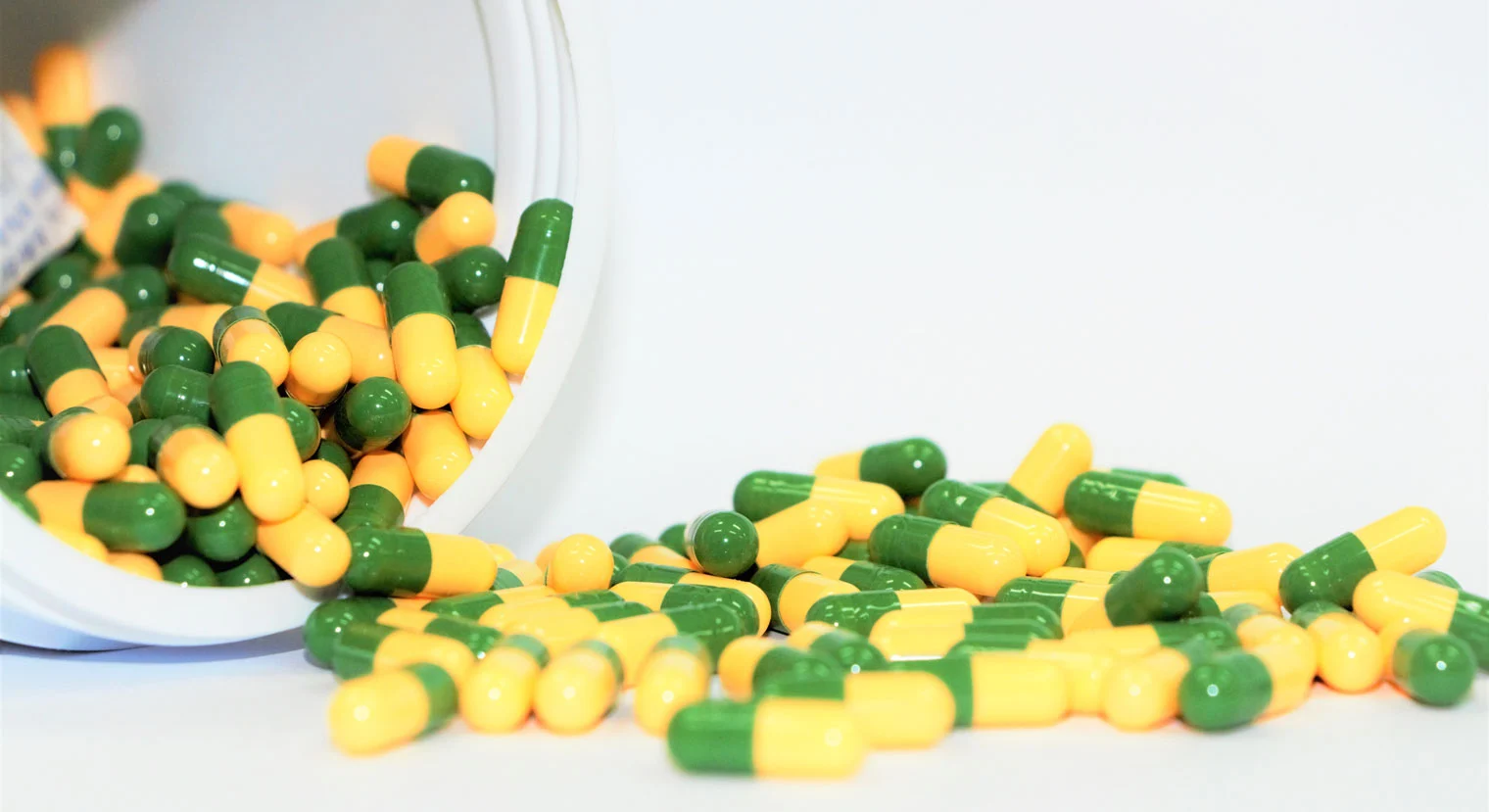
Many opioid pain medications exist to assist patients with various acute and chronic pain issues. Some of the more commonly prescribed opioids include Percocet, Vicodin, and morphine.
One of the newest prescriptions, tramadol (Ultram), has flown under the radar in the shadow of larger, more widely prescribed medications. However, this medication can be just as dangerous as other opioids and has a wide potential for abuse.
Recent trends have indicated the increased presence of tramadol abuse among individuals who suffer from opioid abuse disorder. Just like other opioid medications, tramadol has the potential for physical dependence and causes withdrawal symptoms during the detoxification period.
What is tramadol, and how does it act on the body to become physically dependent?
What Is Tramadol?
Tramadol is an opioid pain reliever that binds to the mu-opiate receptors throughout the body. This attachment changes the way the body reacts to pain, causing different emotional and physical responses that cause pain relief.
Recently, tramadol has been used as the first option when non-opioid pain relievers are no longer effective at treating pain. Additionally, tramadol is used off-label for several mental disorders.
Many physicians prescribe tramadol for depression and anxiety on an off-label basis. Tramadol also works for pain relief similarly to antidepressants, leading to a better emotional response to pain.
Common Causes for Tramadol Prescription
Another reason many patients receive prescriptions for tramadol initially or as an alternative to their current opioid medications is because it causes fewer cases of constipation. Many opioids are infamous for causing intense periods of constipation after long-term use, which can cause physical complications.
Regardless of the slight changes in tramadol and how it acts within the body, the fact is, it’s still an opioid. Patients have the same risk of experiencing withdrawal with tramadol as they do with any other opioid pain medication.
Because tramadol is an opioid analgesic, many people often compare it to other medications such as Vicodin and Percocet. How does this particular medication compare to other opioids?
Tramadol vs. Vicodin vs. Percocet
Although all three of these medications are opioid analgesics, they all act on the body differently.
Tramadol
Tramadol is a fully-synthetic opioid used to treat pain. There are no other active ingredients in this medication, and it acts alone to flood receptors in the body to help with pain management.
Vicodin
Vicodin consists of a combination of the drugs acetaminophen (Tylenol) and hydrocodone. This medication is a partial synthetic. It works by allowing the acetaminophen to raise the body’s pain tolerance while the hydrocodone decreases the pain signals sent to the brain.
Percocet
Percocet is similar to Vicodin in the fact that it contains acetaminophen to increase the body’s pain tolerance. However, it contains oxycodone, which is a natural opiate. Normally, Percocet is prescribed for more intense feelings of pain or chronic conditions.
Because tramadol is widely considered to be lower in strength than Vicodin and Percocet, users often underestimate its potential for dependence. However, tramadol requires a detox period, just like any other opioid medication.
Do You Need to Detox from Tramadol?
Although tramadol may not be one of the stronger opioids on the market, this doesn’t eliminate the need for detox. Individuals who engage in extended periods of abuse of this drug will develop a physical dependence.
This dependence requires the full elimination of tramadol to begin recovery. During detoxification, users will experience periods of pain and discomfort that make it difficult to move forward with the detox process.
Medically-assisted detox may provide the benefits needed to successfully finish and experience long-term recovery. With the assistance of medical staff and certain medications to keep clients more comfortable, the detox process becomes more manageable.
The long-term abuse of tramadol often stems from the effects produced when users ingest larger amounts. What are the effects of tramadol, and how are they similar or different from other opioids?
Tramadol Effects
When tramadol is taken as prescribed, it has pain relieving properties similar to other opioid analgesics. Additionally, this medication can also relieve the side effects of anxiety and depression.
However, taken in excessive amounts, tramadol may cause intoxication. These effects may include the following:
- False sense of wellbeing
- Drowsiness
- Happiness
- Increased relaxation
- Dizziness
Tramadol has a substantial amount of negative side effects. These negative effects include:
Tramadol Side Effects
- Constipation
- Loss of appetite
- Confusion
- Irritability
- Inability to sleep
- Dry mouth
- Tightness in chest
- Difficulty breathing
- Sensory disturbances
Additionally, individuals who suffer from asthma and other breathing complications may find these conditions intensified while taking tramadol. It’s also been linked with a condition known as serotonin syndrome.
Serotonin syndrome occurs when receptors in the body become over-stimulated. Side effects of this condition include high fever, increased pulse, sweating, trembling, agitation, and confusion. In the most severe cases, it can also be life-threatening.
Can You Overdose on Tramadol?
Overdosing on tramadol can be just as easy as overdosing on other opioids. Many users underestimate this prescription drug because it’s not as strong as other opioids. This can end up being a fatal mistake.
Besides the normal symptoms of opioid overdose, tramadol also has the potential to cause seizures. The chances for seizure increase as larger amounts of the drug are ingested. Other signs of tramadol overdose include:
- Respiratory depression
- Shallow breathing
- Cold and clammy skin
- Irregular heartbeat
- Stiff muscles
- Dizziness
- Unconsciousness
The drug Narcan does reverse the effects of a tramadol overdose. If you suspect that someone is suffering from a tramadol overdose, you should contact emergency services immediately.
Once users enter the physical dependence stage of using tramadol, refraining from using this medication trigger intense withdrawal symptoms.
Tramadol Withdrawal Symptoms
Tramadol withdrawal symptoms can differ slightly from those of other opioids. Because of the drug’s chemical makeup, the withdrawal of tramadol may be more similar to antidepressant and serotonin withdrawal. The most common symptoms include:
- Dizziness
- Vertigo
- Nausea
- Headaches
- Insomnia
- Fatigue
- Mood swings
The most noticeable difference between tramadol and other opioids is the lack of diarrhea and high blood pressure.
Additionally, tramadol has also been known to cause psychosis during withdrawal. This is because it works on incoming and outgoing pain signals, which affects the body’s emotional response to pain.
These elements are what make tramadol effective against anxiety and depression. However, this is also what causes the potential for symptoms of psychosis during the withdrawal period.
It’s important to note that this and other symptoms aren’t permanent and pass fairly quickly. However, it’s important to select the right treatment program to give yourself the best chances of success and long-term recovery.
Treatment for Tramadol Addiction
Therapy for tramadol addiction includes several important steps and options for different treatment levels. Treatment for tramadol abuse includes the following elements:
Tramadol Detox
Medically-assisted detox includes a stay in a hospital setting. Clients have access to medical staff and several medications to make withdrawal symptoms less severe. Increased levels of comfort may allow clients the ability to get more sleep and the rest they need.
Treatment Options
Treatment options include inpatient and outpatient levels. Inpatient treatment includes 30, 60, or 90 residencies at a rehabilitation facility. Clients regularly meet with mental health professionals and physicians and participate in one or more of the following treatment options:
- Cognitive Behavioral Therapy (CBT)
- Biofeedback therapy
- Group therapy
- Holistic therapy
- Motivational Enhancement Therapy (MET)
- Dialectical behavior therapy (DBT)
- Art therapy
- Equine therapy
- 12-step programs
- Support groups
- Dual-Diagnosis Treatment
Features of the Best Tramadol Detox
The best tramadol detox will include options for all of the therapies mentioned above. One of the primary focuses should be treating the underlying causes that lead to substance abuse.
Treating the condition and not the symptom is the most efficient way to achieve long-term recovery. Otherwise, the result is most often relapse, as clients still continue to experience the mental health challenges that triggered abuse in the first place.
Mental health and substance abuse counselors should work collaboratively to craft the most effective personalized treatment plan for each client. Finally, a strong aftercare plan should be crafted for post-treatment.
Aftercare Planning for Tramadol and Opioid Misuse
An aftercare plan should include a continuation of several elements during treatment, including mental health services, support groups, and 12-step programs. A strong support system consisting of family members and friends should be structured before exiting treatment.
Outpatient services are also available at most treatment centers and include most of the options listed above without the requirement of residing at the facility. Clients may attend treatment from home and log anywhere from nine to 20-plus hours per week.
All of these elements combined lead to the best odds of long-term recovery from tramadol abuse disorder.
Long-term Recovery from Tramadol Abuse
At Circle of Hope Treatment, we specialize in providing the best options for inpatient and outpatient rehabilitation services, as well as medically-assisted detox. Our attention to aftercare prepares our clients for the best chances for long-term recovery from tramadol abuse.
If you or someone you love is suffering from challenges associated with tramadol abuse, contact one of our admissions specialists and find out how we can help you reclaim your freedom and independence.

